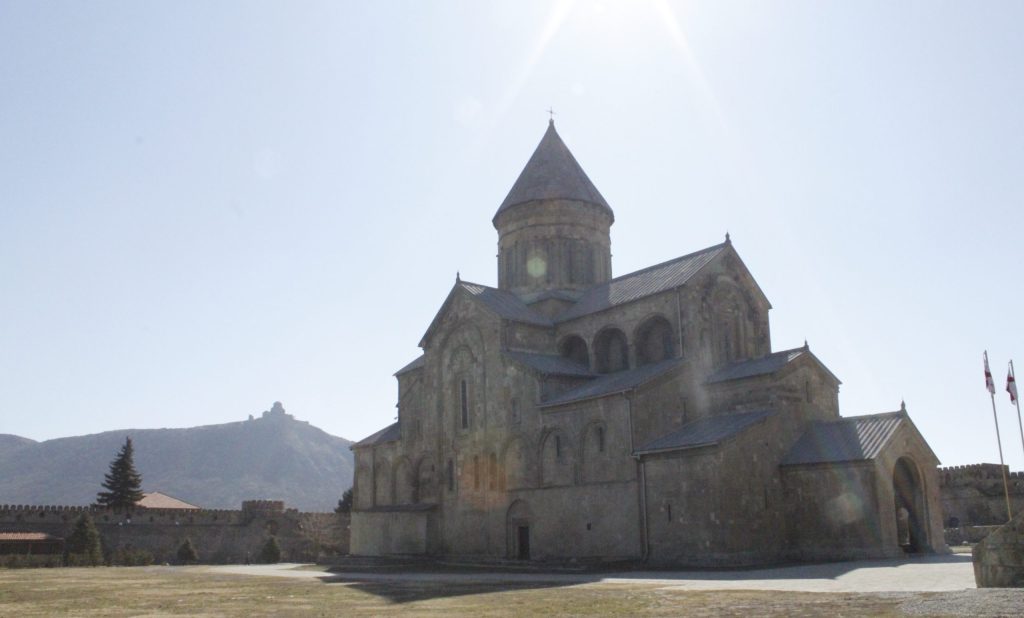
Historical Monuments of Mtskheta
01/01/2025 - 31/12/2025

01/01/2025 - 31/12/2025
Georgian Orthodox church, autocephalous church of the Orthodox communion in Georgia. The church is one of the most ancient Christian communities in the world. The Georgians adopted Christianity through the ministry of a woman, St. Nino, early in the 4th century. In the Middle Ages, Georgia experienced several periods of political expansion, during which the church developed remarkably rich traditions of art, architecture, and literature.
Read More...These top Georgia hiking trails explore waterfalls, mountain summits, deep canyons, wide rivers, rushing trout streams and historic sites.
Read More...There are many wonderful countries in the world where you can find many interesting sights. But if you are looking for a place of incredible beauty with a fascinating history and kind, hospitable people, you need to find your way to Georgia, in a country full of contrasts, where East meets West.
Read More...WELCOME TO “WINE TRAILS” Winery, where wine make by the Friends – For the friends. Our friendship has been going already 54 years, from first class of the school, since 1969. A dream to have our own winery, we had a long time ago, but we started to fulfill our dream in 2019 after pandemic was started. Wine Trails Winery located in KAKHETI wine region, Village IKALTO, Alazani valley.
Read More...Wine producing of ''Twins Wine Cellar in Napareuli'' is based on the oldest Kakhetian method, such as producing wine in kvevri. It points to the uniqueness of this method and it is also a message for the whole world that wine is an integral part of ancient Georgian culture.
Read More...Monastery Wine ” is a millennium brand of Alaverdi Monastery Cellar made by the Alaverdi Monastery congregate in the XIth century cellar. The wine is produced by endemic variety of Kakhetian vine in unique clay vessel – Qvevri. Alaverdi Royal Monastery is historically known by its qvevris and cellar.
Read More...Is an ultra-premium winery specializing in famous indigenous Georgian grape varieties. It was founded in 2008 by Schuchmann family in a very center of Georgian wine growing zone in Tsinandali.
Read More...Georgian Orthodox church, autocephalous church of the Orthodox communion in Georgia. The church is one of the most ancient Christian communities in the world. The Georgians adopted Christianity through the ministry of a woman, St. Nino, early in the 4th century. In the Middle Ages, Georgia experienced several periods of political expansion, during which the church developed remarkably rich traditions of art, architecture, and literature.
Read More...These top Georgia hiking trails explore waterfalls, mountain summits, deep canyons, wide rivers, rushing trout streams and historic sites.
Read More...There are many wonderful countries in the world where you can find many interesting sights. But if you are looking for a place of incredible beauty with a fascinating history and kind, hospitable people, you need to find your way to Georgia, in a country full of contrasts, where East meets West.
Read More...
For me, tourism is a way to get acquainted with another culture, to feel new emotions. There are many beautiful countries in the world, but how to choose where to…
Read more...I am a person who loves good wine and food, the history and culture of Georgia and is able to share these pleasures in an atmosphere of celebration and festivity.…
Read more...This 11 week overland expedition is a group adventure that visits highlights and remote areas of Turkey, Caucasus, Persia, the 5 Stans and the Silk Road. In total you will…
Read more...CAUCASUS & PERSIA UNCOVERED. Uncover the mysteries of the Silk Road on this overland expedition from Tbilisi in the former Soviet Republic of Georgia before travelling south into Armenia. From…
Read more...TDA Global Cycling was conceived in the late 1980’s. The tour begins in Georgia’s capital, Tbilisi, the most charming city in the Caucasus, with its gracious tree-lined boulevards, ancient churches…
Read more...The company created for the gastronomic world and has a team that will provide you with gastronomic daily news from georgia and from every corner of the world and will…
Read more...Beekeeping ferm "Taplikatsi", is equipped with modern technologies and is ready to cooperate with beginners and professional beekeepers. Our aim is to conduct ecologically clean products and promote the development…
Read more...